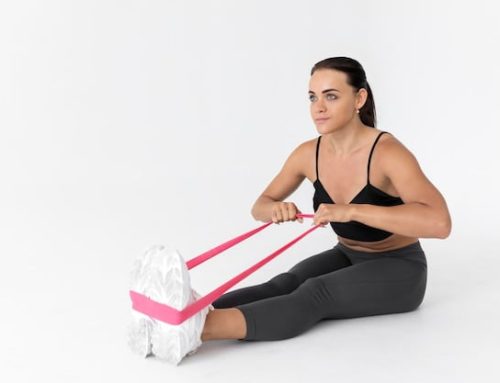Introduction
When it comes to strength training, there are countless methods available that help you build muscle and improve your overall fitness level. However, not all forms of resistance training are created equal. While traditional weightlifting has been a popular option for decades, resistance band training is quickly gaining recognition as a highly effective way to get in shape. In this article, we will explore why resistance band training may be the best form of resistance training for you.
Understanding Resistance Band Training
Resistance bands are made of elastic and come in various lengths, colors, and strengths. These bands provide resistance throughout the entire range of motion, which makes them an excellent option for building strength and flexibility. Unlike weights, resistance bands allow for continuous tension throughout the exercise, which forces the muscles to work harder. As a result, you’re able to get faster results with resistance band training.
Benefits of Resistance Band Training
Resistance band training offers numerous benefits over traditional weight training:
- Lightweight and portable: Resistance bands are small and can be easily transported, making them a great option for people who travel frequently or prefer to exercise at home.
- Safe and easy to use: Unlike heavy weights, resistance bands put less strain on your joints and are less likely to cause injuries.
- Offers versatility: With resistance bands, you can perform a wide range of exercises and target different muscle groups. You can also adjust the resistance level to challenge yourself as you progress.
- Benefits all fitness levels: Resistance bands can be used by beginners and advanced athletes alike, making them a great option for people at all fitness levels.
- Provides full-body workout: Resistance bands can target multiple muscle groups at once, giving you a full-body workout in just a few minutes.
Resistance Band Exercises
Resistance bands can be used to perform a variety of exercises that target different muscle groups. Here are some examples:
| Exercise | Muscles Targeted |
|---|---|
| Bicep curls | Biceps |
| Tricep extensions | Triceps |
| Squats | Quads, glutes, hamstrings |
| Push-ups | Chest, triceps, shoulders |
| Lateral band walks | Glutes, hips, thighs |
Incorporating Resistance Bands Into Your Routine
Resistance band training can be incorporated into your existing workout routine or used as a standalone exercise. Here are some tips to get started:
- Start with a lighter resistance band and gradually work your way up as you get stronger.
- Try to perform each exercise slowly and with control for maximum effectiveness.
- Incorporate resistance band exercises into your existing workout routine. For example, you can use resistance bands for warm-ups, cool-downs, or to perform supersets.
- Use resistance bands to target weak or underdeveloped muscle groups.
Conclusion
Resistance band training is a highly effective and versatile way to build strength and improve your overall fitness level. With numerous benefits over traditional weight training, such as portability and safety, resistance bands are a great option for people of all fitness levels. By incorporating resistance bands into your workout routine, you can target different muscle groups and achieve faster results. So, what are you waiting for? Grab a resistance band and get started today!






